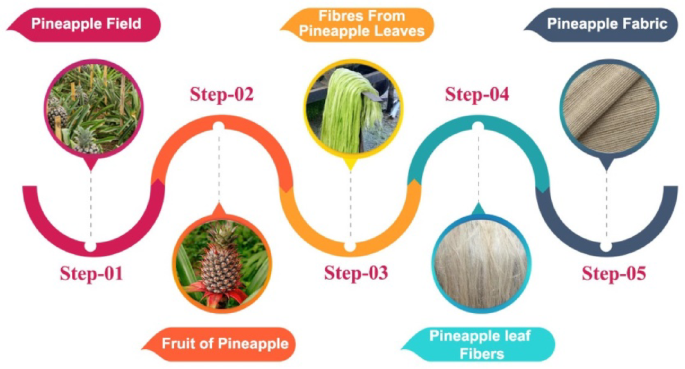Tensile test of PALF
The mechanical performance of Pineapple Leaf Fibre (PALF)-reinforced polymer composites was evaluated through tensile testing, following ASTM standards for specimen preparation. The specimens were subjected to testing using an Electronic Tensometer (Model PC-2000), equipped with a 20 kN load cell, operating at a crosshead speed of 5 mm/min. A gauge length of 50 mm was maintained during the tests, which were conducted at a controlled temperature of 28 °C and 50% relative humidity. During testing, the specimens were gradually loaded until failure, and key mechanical properties such as tensile strength and elongation at break were recorded. The fracture typically occurred at the midpoint of the gauge length.
Figure 7 illustrates the tensile testing results as a line graph, demonstrating a smooth and gradual transition of the stress-strain curve. This indicates consistent load transfer and uniform mechanical behavior between layers of the composite. The observed graph supports the hypothesis of a well-bonded and homogeneously distributed fiber-matrix interface, which ensures a continuous and reliable performance across the composite material. These characteristics are crucial for the accurate estimation of intermediate property values, confirming the robustness of the material under tensile stress.
From the results shown in Fig. 7, it can be inferred that the composite with a 5% volume fraction of PALF reinforcement in a polyester resin matrix exhibited an ultimate tensile strength of 9 MPa. This finding is consistent with previous research, which suggests that PALF, owing to its higher aspect ratio (AR), cellulose content, and crystallinity, can significantly improve the tensile strength of composites. However, it is important to note that the hydrophilic nature of cellulose could negatively influence the tensile properties if the fiber’s moisture content is not controlled. Additionally, the incorporation of compatibilizers into the matrix has been shown to enhance the interfacial bonding between the PALF fibers and the resin. Throgh promoting a more homogeneous fiber dispersion and reducing fiber aggregation, compatibilizers improve the mechanical strength of the composite and prevent premature failure due to fiber pull-out.
Furthermore, the uniform fiber-matrix interaction reduces the likelihood of fracture propagation within the composite, thereby enhancing the overall tensile performance. The improvements in the tensile strength and elongation at break are attributed to the effective dispersion of fibers within the matrix, which minimizes defects and stress concentrations within the material. These findings align with the results of previous studies, emphasizing the critical role of fiber treatment, matrix compatibility, and fiber orientation in determining the mechanical properties of PALF-reinforced biocomposites. The tensile testing results demonstrate that PALF-reinforced composites exhibit significant potential for use in a variety of structural applications, particularly where strength, durability, and eco-friendliness are prioritized. Further investigations into optimizing fiber treatments and resin formulations will likely yield even stronger, more versatile biocomposites.
Ultimate Tensile Strength and Load Vs Layers.
Elemental composition analysis using energy dispersive X-ray spectroscopy (EDS)
Energy-dispersive X-ray spectroscopy (EDS) is a highly effective analytical technique used to determine the elemental composition of materials16. In this method, an electron beam is directed at the sample, causing the atoms within the material to emit characteristic X-rays. These emitted X-rays are captured and analyzed by an energy-dispersive detector, generating an elemental spectrum. The peaks in the spectrum are indicative of specific elements, enabling both qualitative and quantitative analysis of the sample’s composition. EDS is extensively applied in fields such as materials science, forensics, and geology, owing to its ability to provide detailed compositional information at micron to nanoscale resolutions. This makes EDS particularly valuable for tasks like trace element identification, elemental mapping, and chemical characterization of materials. Additionally, when combined with scanning electron microscopy (SEM) 17, EDS enhances the ability to investigate both the elemental composition and the morphological characteristics of the sample. The SEM results for the 2, 4, 6, and 8-layer PALF composites are presented in Fig. 8a–d, respectively.
In this study, EDS was performed on pineapple leaf fibre (PALF) composites with varying layer configurations (2, 4, 6, 8 layers) as shown in Figs. 9, 10, 11 and 12. The analysis revealed that the composition of the PALF composites is predominantly carbonaceous, with oxygen as the next most abundant element. Trace elements such as sodium, silicon, niobium, and magnesium were also detected. The total elemental composition of the samples summed to 100.00 weight%, with one standard deviation (1 Sigma) accounting for the associated uncertainty in the measurements. These results highlight the carbon-rich nature of PALF composites, which may have significant implications for their potential applications in industries where carbon-based materials are highly valued. The precision in elemental characterization achieved through EDS plays a crucial role in material quality control and further aids in the development of these biocomposites for various engineering applications.
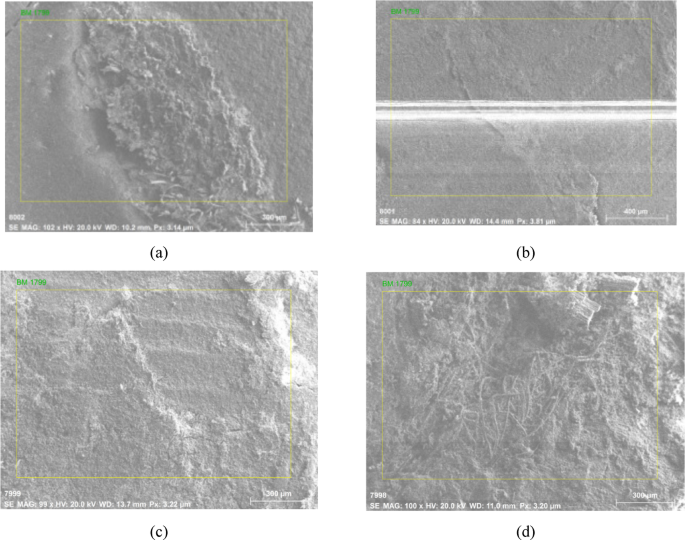
SEM results: (a) 2, (b) 4, (c) 6, and (d) 8 layers.
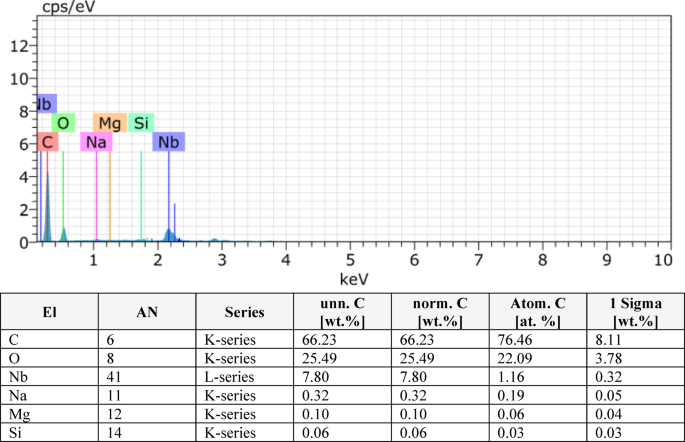
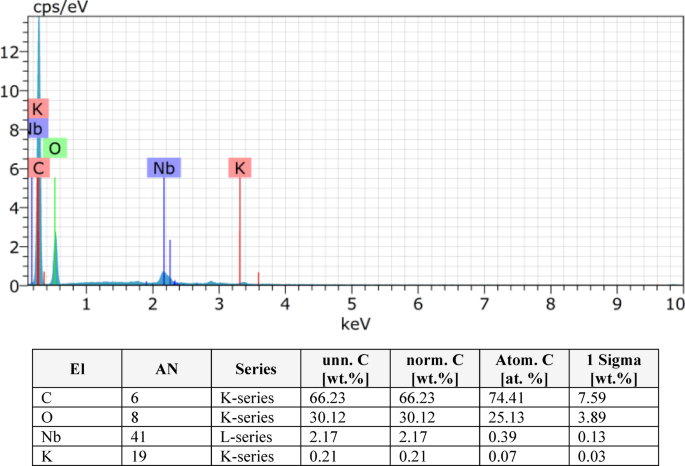
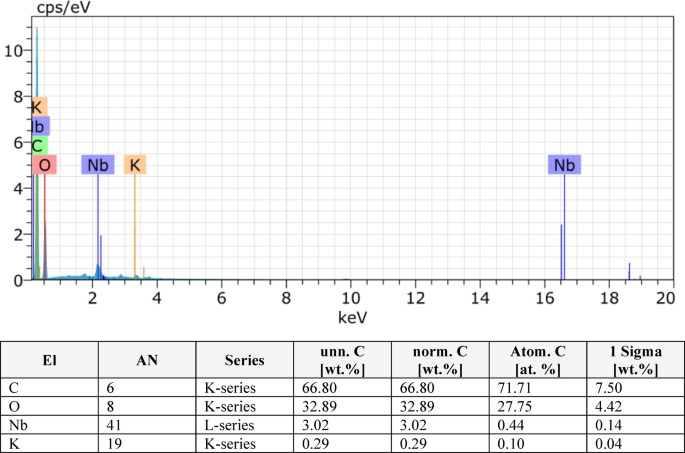
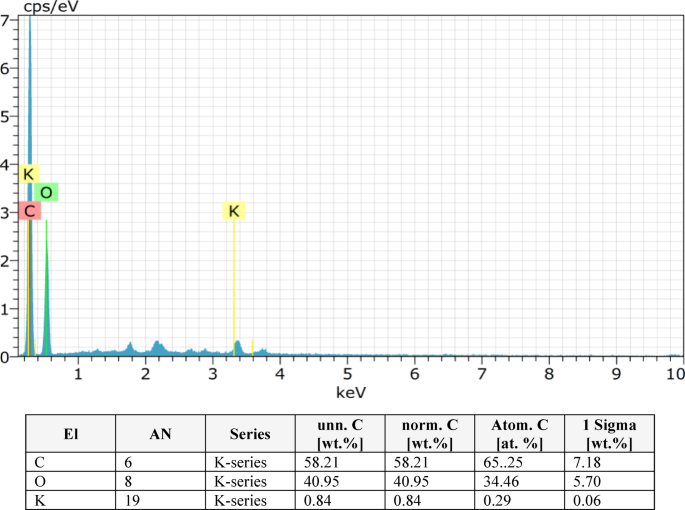
Implications of elemental composition on the mechanical and functional properties of PALF composites
The distinctive characteristics of carbon-rich pineapple leaf fibre-reinforced biocomposites (PALF) position them as a versatile and promising material with significant potential across various applications. The high carbon content within these composites is a key factor contributing to their mechanical strength and electrical conductivity, though the specific form of carbon and its arrangement within the composite matrix are critical factors influencing performance. The examination of the elemental analysis reveals a substantial carbon content in the PALF composites, suggesting potential improvements in the mechanical properties and overall durability of the material.
With carbon constituting over 66% of the composite, the resulting material demonstrates exceptional structural strength, making it ideal for applications requiring high performance. The intrinsic rigidity and durability of carbon make it a prime candidate for reinforcement, contributing to improved tensile strength and modulus. As such, carbon-rich PALF composites possess characteristics that render them well-suited for structural applications where both lightness and strength are paramount. Examples of such applications include aerospace components, automotive parts, and biomedical equipment, where high-performance materials are essential.
Moreover, the presence of oxygen and trace elements such as niobium and potassium adds further potential to the composite’s capabilities. Oxygen, as a functional component, may enhance the material’s compatibility with specific polymer matrices, thereby improving the bonding at the interface between the fibre and the matrix, ultimately leading to improved mechanical properties. The inclusion of niobium and potassium can also enhance specific performance traits, such as corrosion resistance and catalytic activity. These features open up additional possibilities for the use of PALF composites in industries such as chemical engineering, electronics, and environmental remediation. The high carbon content of PALF composites presents a significant opportunity for the development of advanced materials with tailored characteristics. This makes them particularly appealing for diverse industrial applications that prioritize strength, durability, and performance. The unique combination of mechanical and functional properties makes PALF composites a promising material for a wide array of applications requiring both structural integrity and specialized performance. Also, the carbon content not only carbon content alone does not directly dictate strength. Fiber orientation, matrix adhesion, and dispersion also play a crucial role in defining mechanical properties.
